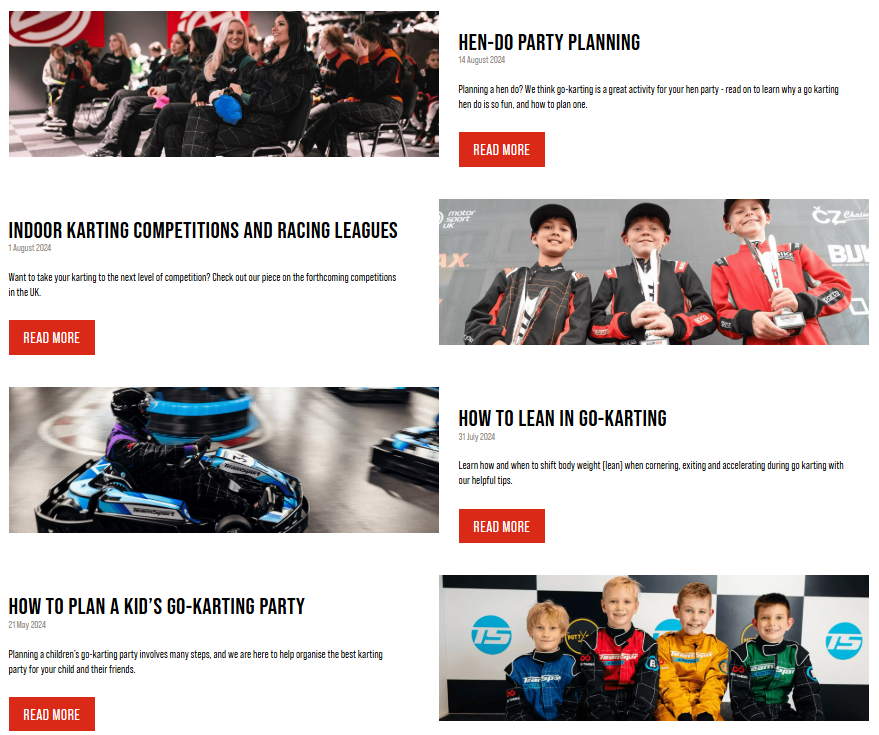Exclusivity Bias
Everybody likes to feel special. Exclusivity bias is the idea that people are more inclined to be interested in something if it is offered (or seems like it’s offered) to them and them alone. Products with limited accessibility have a shiny appeal that regular product offerings don’t, and consumers are more likely to both purchase them and feel positive about said purchase.
To ground this in copywriting, you need to consider what is going to appeal to your target audience. As an example, Sunsail offers private yacht charters for couples, families and solo travelers - their blog is filled with cluster content around their various charter destinations, pointing out some of the best local attractions in each area.
One way that they capitalise on exclusivity bias is by making sure to highlight points of interest for their target audience that are only accessible by yacht, like uninhabited islands and hidden beaches. This makes users excited about the one-of-a-kind and incomparably special experience they could have on a yacht charter, especially with Sunsail’s expertise.
This cognitive bias goes hand-in-hand with scarcity bias - find out more about both with our blog on Harnessing Scarcity to Drive Urgency in Your Black Friday Campaign.

Chunking
How often do you click on a webpage and find that the text is too small, it’s too close together, there are no pictures or visual elements to break the text up, and immediately you click away to another site that’s easier to read? I know I do it all the time. When most searches offer up the information you want within the first page of results, offering a good user experience is vital to help your content stand out.
Chunking is a behavioural practice that is, perhaps, the easiest to execute with the most fantastic results. It involves cutting your website content into “chunks” - much shorter paragraphs than you would find in fiction writing or academia or any other mediums - so that the text is easy to read and users can pick out all the main points just by skim-reading.
This is useful for two reasons. Firstly, it encourages you as the copywriter to be respectful of your reader’s time, guaranteeing that they don’t have to dig deep to find the answers they want. Secondly, chunking exercises are one of the quickest ways to improve your copywriting skills. If each paragraph is only a few sentences long, then it forces you to consider the key points and strip everything else away. This helps you communicate your brand’s story in a more interesting way.
Social Proofing
Reviews and testimonials go a long way towards buying decisions - in fact, as we explain in our Local SEO Tips for Businesses blog, an 2023 study by Emplifi uncovered that 90% of consumers say that consumer ratings and reviews have the biggest impact on purchasing decisions. The quality and quantity of a product’s reviews go a long way towards a user deciding that buying said product is the best choice, helping to build brand reputation and consumer trust.
As a copywriter, understanding the power of social proofing can really help to improve the saliency of your work. Whether it’s as simple as cherrypicking fantastic social reviews, or building detailed testimonials and case studies from the ground up, it’s a brilliant way to talk to users directly and assess what they value so you can lead with it going forward.
For example, companies like Apogee have built a matrix of excellent case studies. They use a defined storytelling structure to make the client’s problem and the impact of their implemented solution very clear, leaning on key quotes from clients to use social proofing the best way they can. Below is an example from their University of Lincoln case study.
Learn more with our blog on Harnessing the Power of Social Proof in Digital Marketing Strategies.

Friction Reduction
“Friction” in marketing refers to the distractions, obstacles and checkpoints a user may face while trying to complete a desired action. For example, when you check out online, you’re often faced with pages and pages of fields to complete before you can make the transaction. Only after filling in your personal details, shipping address, billing address and payment information can you finally buy your item - this is all friction.
Sometimes a little friction is important, but users value the ability to bypass unnecessary and tedious steps wherever possible. When it comes to copywriting, friction reduction (much like chunking) puts the reader at the forefront of your mind when you’re writing - you think more of what they want to find, and how you can make the path to get there as smooth and seamless as possible.
A simple way to reduce friction is to lay out each section of your copy with a clear and descriptive heading. Then the piece is easier to explore, especially if you also recommend adding jump links to the introductory section so users can skip to the information they care about. Another simple way to reduce friction is by using bullet points where appropriate, as bullet points are far more accessible than a block of text when it comes to lists or complex explanations.
Find out more with our guest blog Friction: A Digital Wake-Up Call.
Social Identity Theory
Lastly, social identity theory is a brilliant thing to bring into your copywriting. Social Identity Theory discusses how our perceptions of in-groups and out-groups inform our identity - if you associate yourself with certain groups, from physical groups like “single mothers” to more abstract groups like “adventurers”, then marketing targeted towards these groups is more likely to affect you.
Tailoring your copywriting with social identity theory is a simple way to make your messaging more effective. TeamSport’s recent content, for example, is clustered around the different audiences they want to attract to their go karting venues - their comprehensive guides span planning the perfect stag-do, keeping kids busy during the school holidays, the best racing leagues and competitions, and more.
To grasp and experiment with Social Identity Theory is to have a strong understanding of your target audience - what their pain points are, their goals, their expectations. Not only is the reader better catered to, but you as the copywriter understands how to start conversations with them.
Visit our blogs on Boosting Ecommerce Conversion Rates with Personalisation and How to Bring Personas to Life in Your Marketing to learn more.

Key Takeaways
In short, these five behavioural principles are an excellent introduction to how a basic understanding of nudges and cognitive biases can take copywriting to the next level. They each encourage the copywriter to be more thoughtful about their content, taking their audience into account in every word, sentence and paragraph.
This only scratches the surface of behavioural principles that you can apply to your copywriting - there are many cognitive biases and theories about motivation you can use to write stronger, clearer, more salient copy. We recommend reading these blogs if you’re eager to get started:
At Reflect Digital, we use behavioural science to build and strengthen our marketing strategies, so they always hit with the intended impact. If you’re curious about how we can help you, explore our Human Behaviour and Content services.
Contact Us




























